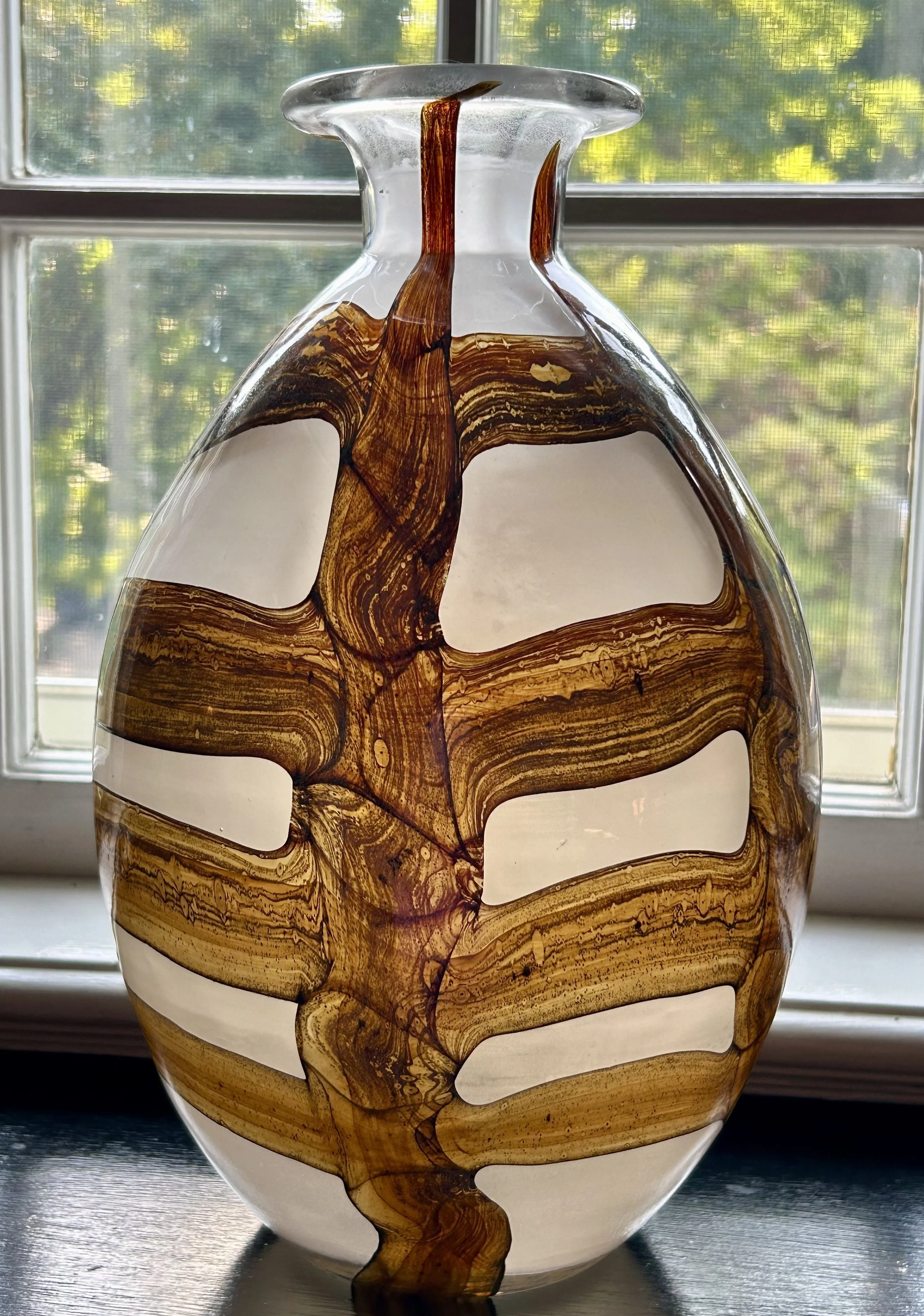Glass From The Past
I have become weirdly attracted to vintage art glass of late. I say “weirdly” because if someone had told me 20 years ago I would find the art form of glass intriguing, I would have thought them nuts. To me, glass was a “functional” thing – windows, vases, jars; practical and necessary items in our everyday lives. But, much like quilts, just because something is used for practical purposes, does not mean it cannot also be a form of art. And this is an artform of which I have virtually no knowledge.
As I often do when curious, I turn to The Oracle and hunt for information. There is naturally formed glass, and these have names depending on their creation. Volcanic molten rock turned into glass is called “obsidian” (or “volcanic glass”). Meteoritic impacts on the earth millions of years ago created “tektites” (also called Libyan Desert Glass – I’m guessing that’s where they first were found). When lightning strikes sand, “fulgurites” are created – brittle tubes of melted sand. Oddly, some marine creatures have silica skeletons which are also a form of natural glass. (https://whatson.cmog.org/exhibitions-galleries/glass-nature).
Humans began making glass objects around 4000 years ago, and there is debate as to whether that began in ancient Egypt or Near East (near modern Iraq). This may be due to the dry conditions in Egypt, near perfect for preservation, which allowed ancient glass items to survive. The prone to flooding regions of Near East degraded ancient glass, leaving a flaky powder which was often overlooked by early archeologic explorers. I will allow you to research to your heart’s content, as it is fascinating but not pertinent to my thoughts this morning (https://www.smithsonianmag.com/science-nature/a-brief-scientific-history-of-glass).
I think my favorite line in the research was learning what exactly glass is. Crystalline quartz, which seems similar to glass in many ways, is composed of silica atoms that are regularly spaced in a repeating pattern. Glass, however, uses the same material, but the atoms “are arranged topsy-turvy” (see prior Smithsonian article). Topsy-turvy! What artist cannot be attracted to topsy-turvy?! The idea of using a basic item, atoms of silica, and stirring it all up to create something wonderful and new lays at the heart of creative expression. Glass making adds the rather dangerous element of fire, making my frequently nicked fingers from rotary cutters used for quilting seem rather childish.
This vase, a recent thrift store find costing a few dollars, spoke to me immediately. The thing is 12” tall and weighs nearly 6 pounds. It is not signed, but has a pontil mark on the bottom (see prior blog for explanation: https://www.ericasheirloomquilts.com/ericas-heirloom-treasures/primary-colors ). It has a wonderful 1970s vibe, and the dark brown swirls set against an opaque white base appealed to me. I originally place it in a corner cabinet in our family room, but the piece fades to boring when set in a dark corner. I carried it around the house a few days back, and when I set it on this window sill, it lit up. So there it stayed. Even hubby noted how cool it looks with the sunlight behind it, and hubby noting anything “new” is noteworthy (I frequently say to him “if it ain’t naked, you don’t notice…”)
While my piece is unsigned, it looks strikingly like the work done at Mdina Glass, a company started in 1968 on the island of Malta by two British artists. It is still in operation (https://www.mdinaglass.com.mt/en/home.htm). An early pattern produced in the mid 1970s was “Earthtones”, later called “Earth”, and is made of a brown and sandy opaque Maltese glass. While the coloring is identical, none of the pieces I could find showed a spine design similar to mine. I have contacted the company to see if I can get a definitive yes or no, but I actually do not care all that much.
The piece is fun, offering a variety of interpretations due to its patterning. Its warm colors offer a feeling of grounding, as “Earth” might. And, given that it is a simple vase by design, I have come to realize that the human spirit likes to create beauty even for the most simple items in our lives. Much like a quilt, the utility of the object is only enhanced by the desire of the creator to offer a sparkle of design. I confess I am now rather attracted to the handmade glass items of yesterday. Likely more to follow.

